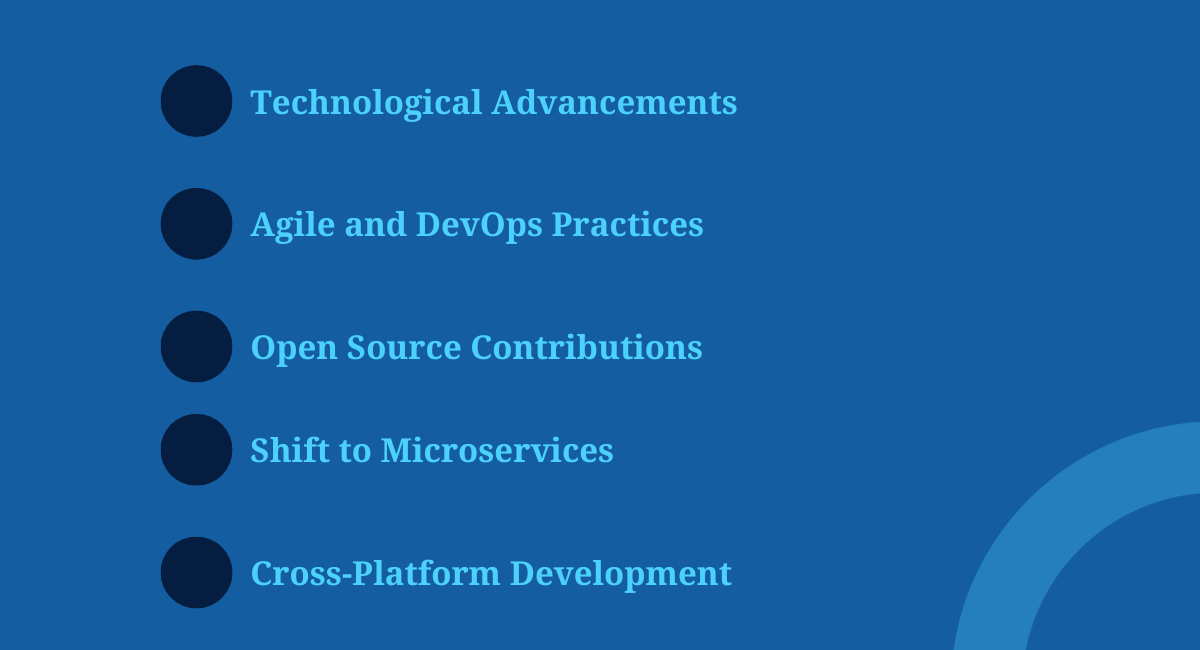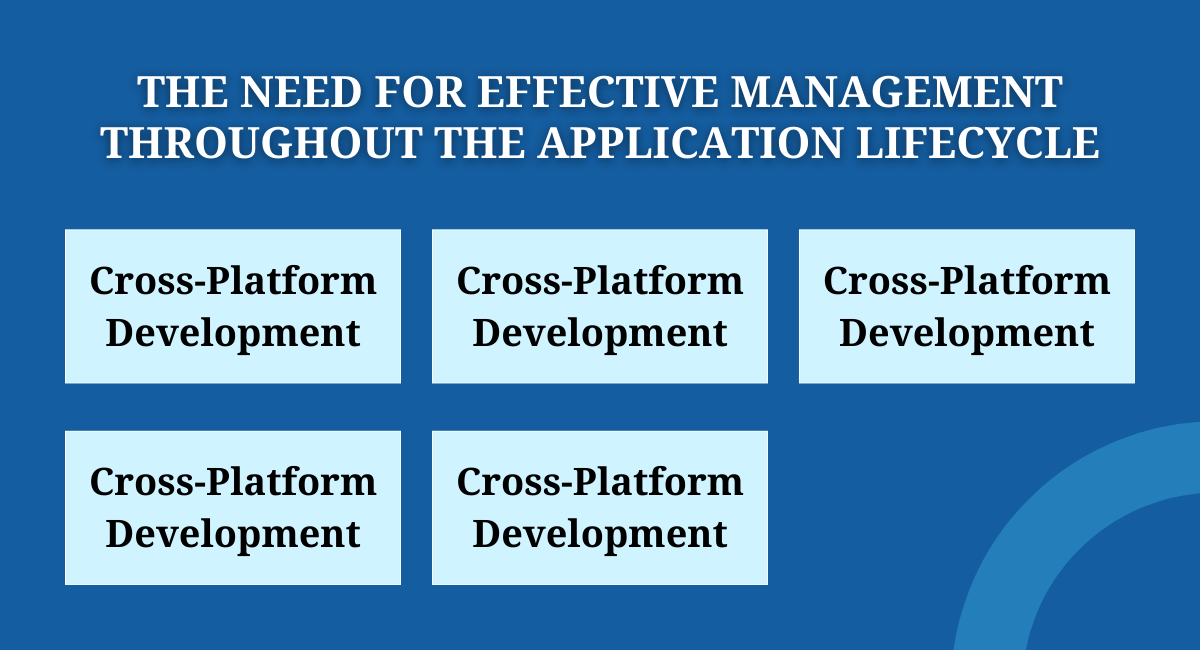Software development is a dynamic and ever-evolving field that plays a crucial role in shaping the modern technological landscape. Over the years, we have witnessed significant advancements in programming languages, development methodologies, and tools. Read this guide on Application Lifecycle Management (ALM): What It Is and Why You Need It.
The landscape of software development is characterized by continuous innovation, driven by the need to meet the growing demands of users and businesses.

Technological Advancements:
The rapid pace of technological advancements, including artificial intelligence, cloud computing, and the Internet of Things (IoT), has transformed the way software is developed, deployed, and utilized.
Agile and DevOps Practices:
Agile methodologies and DevOps practices have gained widespread adoption, emphasizing collaboration, flexibility, and continuous delivery. These approaches enable development teams to respond quickly to changing requirements and deliver high-quality software.
Open Source Contributions:
The open-source movement has played a significant role in fostering collaboration and knowledge sharing within the software development community. Many projects and libraries are open source, allowing developers to leverage and contribute to a wealth of resources.
Shift to Microservices:
The shift from monolithic architectures to microservices has become prominent. Microservices enable the development of modular and scalable applications, facilitating easier maintenance and updates.
Cross-Platform Development:
With the proliferation of diverse devices and platforms, cross-platform development frameworks have gained popularity. These frameworks enable developers to create applications that run seamlessly on multiple platforms, reducing development time and costs.
The Need for Effective Management Throughout the Application Lifecycle

As the software development landscape evolves, the importance of effective management throughout the application lifecycle becomes increasingly evident. Successful software development goes beyond writing code; it involves comprehensive planning, execution, and maintenance. Key aspects of effective management throughout the application lifecycle include:
Requirements Management:
Clear understanding and documentation of requirements are essential to ensure that the developed software aligns with user expectations and business objectives.
Project Planning and Execution:
Thorough planning, resource allocation, and project execution are critical for delivering software projects on time and within budget. Agile methodologies emphasize iterative development, allowing for flexibility in project execution.
Quality Assurance and Testing:
Rigorous testing processes are vital to identify and rectify bugs, security vulnerabilities, and performance issues. Quality assurance ensures that the software meets the required standards of reliability and functionality.
Deployment and Release Management:
Effective deployment strategies, including continuous integration and continuous deployment (CI/CD), streamline the release process and minimize downtime.
Maintenance and Updates:
Ongoing maintenance is crucial for addressing evolving user needs, fixing bugs, and adapting to changes in the technological landscape. Regular updates and patches help ensure the long-term success of software applications.
Book a Demo and experience ContextQA testing tool in action with a complimentary, no-obligation session tailored to your business needs.
The Importance of ALM in Software Development
Ensuring Project Visibility and Traceability
Tracking Project Progress:
ALM provides a structured framework for tracking project progress at every stage of the software development lifecycle. Through dashboards, reports, and metrics, stakeholders can gain real-time insights into the status of development, testing, and deployment activities.
Key Benefits:
- Improved decision-making based on accurate and up-to-date information.
- Early identification of potential delays or bottlenecks, allowing for proactive mitigation.
Documenting Changes and Decisions:
ALM tools enable the systematic documentation of changes, decisions, and discussions throughout the project lifecycle. This documentation serves as a historical record, providing context and rationale for modifications made during development.
Key Benefits:
- Enhanced transparency by documenting the evolution of project requirements and features.
- Facilitates knowledge transfer and onboarding of new team members.
Enhancing Collaboration and Communication
Bridging the Gap Between Development and Operations:
ALM promotes collaboration between development and operations teams, breaking down traditional silos. This integration is crucial for achieving continuous integration and continuous delivery (CI/CD) practices, where code changes seamlessly transition from development to deployment.
Key Benefits:
- Accelerated release cycles and reduced time-to-market.
- Improved software quality through early and frequent collaboration between development and operations.
Facilitating Cross-Functional Teamwork:
ALM encourages cross-functional teamwork by providing a unified platform for developers, testers, project managers, and other stakeholders to collaborate. Shared repositories, integrated communication channels, and collaborative workflows foster a culture of shared responsibility.
Key Benefits:
- Faster problem resolution through streamlined communication.
- Increased efficiency as team members can easily access and contribute to shared project artifacts.
Improving Risk Management and Compliance
Identifying and Mitigating Risks Throughout the Lifecycle:
ALM facilitates comprehensive risk management by providing tools for identifying, assessing, and mitigating risks at various stages of the software development process. Risk tracking and mitigation strategies are integrated into project planning and execution.
Key Benefits:
- Proactive risk mitigation to prevent issues before they escalate.
- Improved decision-making based on a thorough understanding of project risks.
Ensuring Compliance with Industry Standards and Regulations:
ALM supports adherence to industry standards and regulatory requirements by enabling the integration of compliance checks and validation processes within the development lifecycle. Documentation and traceability features help demonstrate compliance to auditors.
Key Benefits:
- Reduced legal and financial risks associated with non-compliance.
- Enhanced trust from customers and stakeholders through demonstrated adherence to quality and regulatory standards.
Challenges and Best Practices in Application Lifecycle Management
A. Common Challenges Faced During ALM Implementation
Resistance to Change:
One of the primary challenges encountered during the implementation of Application Lifecycle Management (ALM) is resistance to change within development teams. This resistance may arise from a lack of understanding regarding the benefits of ALM, fear of disruptions to established workflows, or concerns that the new processes may impede productivity.
To address this challenge, it is crucial to communicate effectively with the team, emphasizing the advantages of ALM in terms of efficiency, collaboration, and overall project outcomes. Inclusive decision-making processes, where team members have a voice in the transition, can also help alleviate concerns and foster a more positive reception of ALM practices.
Integration Complexities:
Another common challenge in ALM implementation is the complexity associated with integrating various tools and systems used throughout the software development lifecycle. Incompatibility between existing tools, data migration challenges, and the need for seamless communication between different stages of development can pose significant hurdles.
To mitigate these challenges, organizations should carefully select integrated ALM tools designed to work cohesively. Additionally, adopting a gradual implementation approach allows teams to adapt incrementally, minimizing the risk of disruptions and easing the integration process.
B. Best Practices for Successful ALM Adoption
Establishing Clear Communication Channels:
A key best practice for successful ALM adoption is the establishment of clear and open communication channels within the development team and across departments. Creating a culture of transparency and collaboration is essential.
Leveraging collaboration platforms, such as project management tools and communication channels, facilitates real-time information sharing. Regular team meetings, status updates, and training sessions ensure that everyone is well-informed about ALM processes and changes, fostering a shared understanding of project objectives.
Investing in Training and Skill Development:
To ensure successful ALM adoption, organizations should invest in comprehensive training and skill development programs. Equipping team members with the necessary knowledge and skills to effectively use ALM tools and follow best practices is crucial. Training programs should cover both theoretical aspects of ALM and hands-on experience with specific tools.
Additionally, providing mentorship programs and ongoing support helps address questions and challenges that may arise during the transition, contributing to a smoother integration of ALM practices into the development workflow.
Adopt AML
The adoption of Application Lifecycle Management (ALM) is paramount in navigating the complexities of modern software development. ALM provides a structured framework that spans the entire software development lifecycle, addressing challenges and streamlining processes from planning and coding to testing, deployment, and maintenance.
It ensures project visibility, fosters collaboration, and manages risks effectively. ALM facilitates adaptability to evolving requirements and technological landscapes, contributing to the delivery of high-quality software products that align with user expectations and business objectives.
You may also be interested in: Level Up Your UI/UX Game: The Ultimate Guide to Visual Testing
We make it easy to get started with ContextQA tool: Start Free Trial.
